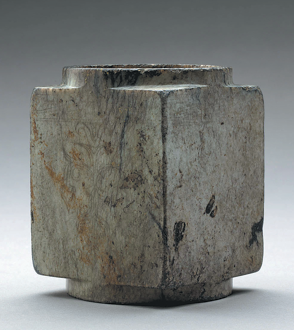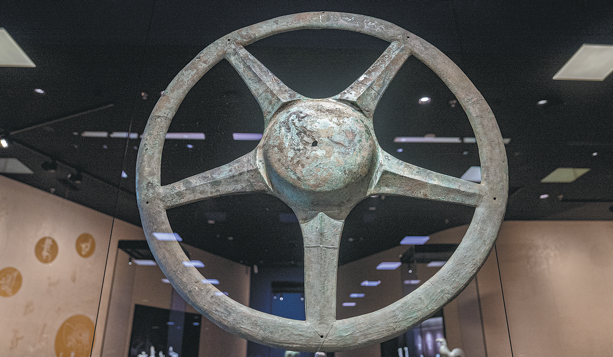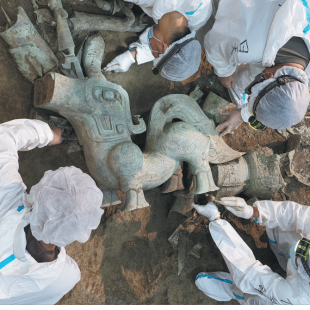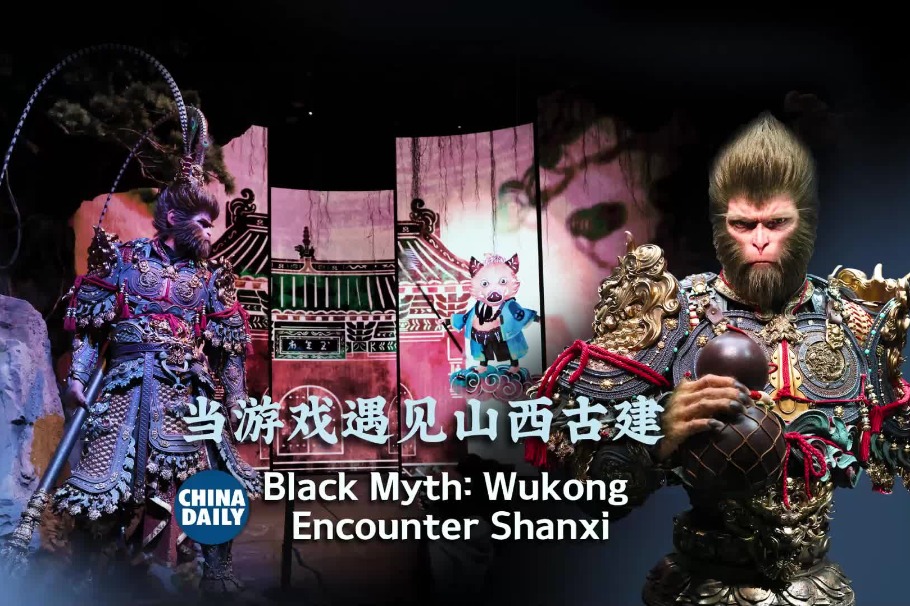Gold, bronze and mystery
New studies reveal an astonishing blend of artistry, technology and spiritual belief, Peng Chao reports in Chengdu.


Artifacts from the new pits include a bronze altar, a tortoise-shell-shaped vessel covered with a net, a human figurine with a serpent's body carrying a zun — a vessel used for rituals — on its head, and a bronze artifact shaped like a dragon with a pig's nose.
Ran, the institute's lead archaeologist at Sanxingdui, says that archaeologists had never seen anything like these items before.
To date, 23,000 relics have been unearthed from the eight pits, according to Liu Zhiyan, vice-president of the Sichuan Provincial Cultural Relics and Archaeology Research Institute. Many of the important finds are on display at the Sanxingdui Museum, which is built on the ruins.
Liu Baige, a postdoctoral researcher at the same institute, says both the types and casting techniques of the bronze artifacts unearthed from Sanxingdui reflect the "unity in diversity" of Chinese bronze culture.
"The bronzeware unearthed at Sanxingdui is highly similar to that of the Central China Plains bronze culture, indicating close cultural ties between the two ancient cultures," he says.
The bronze artifacts from Sanxingdui used the piece-mold casting technique — a unique Chinese bronze-making method that originated in the Erlitou period (c.18th century-16th century BC) — with no evidence of the lost-wax casting used by northern nomadic cultures and Western civilizations, Liu adds.

Huo the Sichuan University professor says the commonalities between the bronze cultures of Sanxingdui and Central China Plains are fully reflected in their jade artifacts and ritual bronze vessels, as well as in the forms, decorative patterns, production techniques and use of raw materials for bronze vessels. This demonstrates that the two cultures were closely linked, while also indicating that the Sanxingdui site was deeply influenced by the Central China Plains' bronze ritual system, Huo says.
"Sanxingdui serves as an excellent example for us to study the origins and development of Chinese civilization, the outward cultural diffusion of the Central China Plains culture, as well as the cultural absorption and re-creation of the Central China Plains culture in peripheral regions," he adds.
Contact the writer at pengchao@chinadaily.com.cn





































